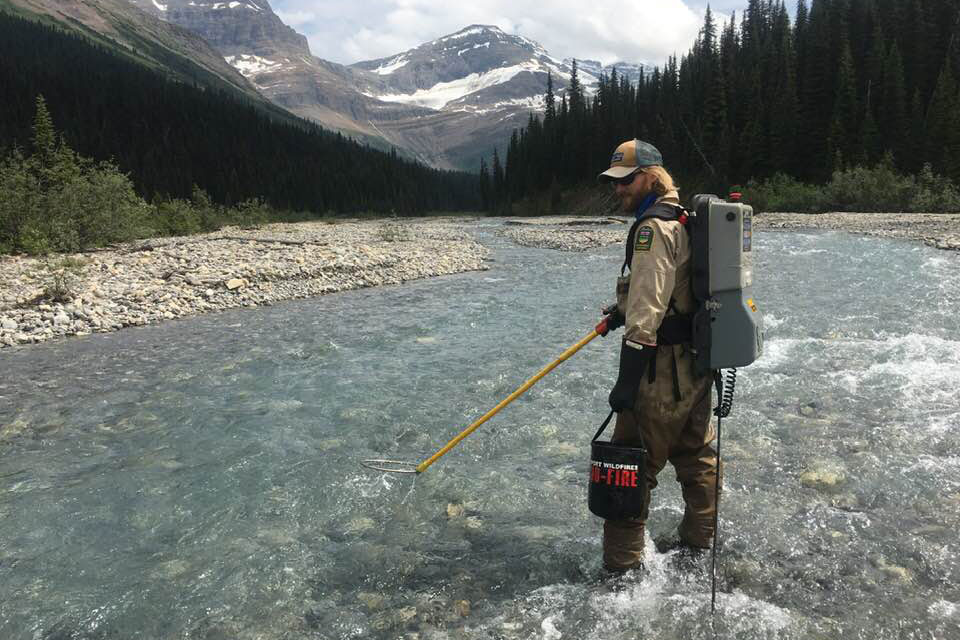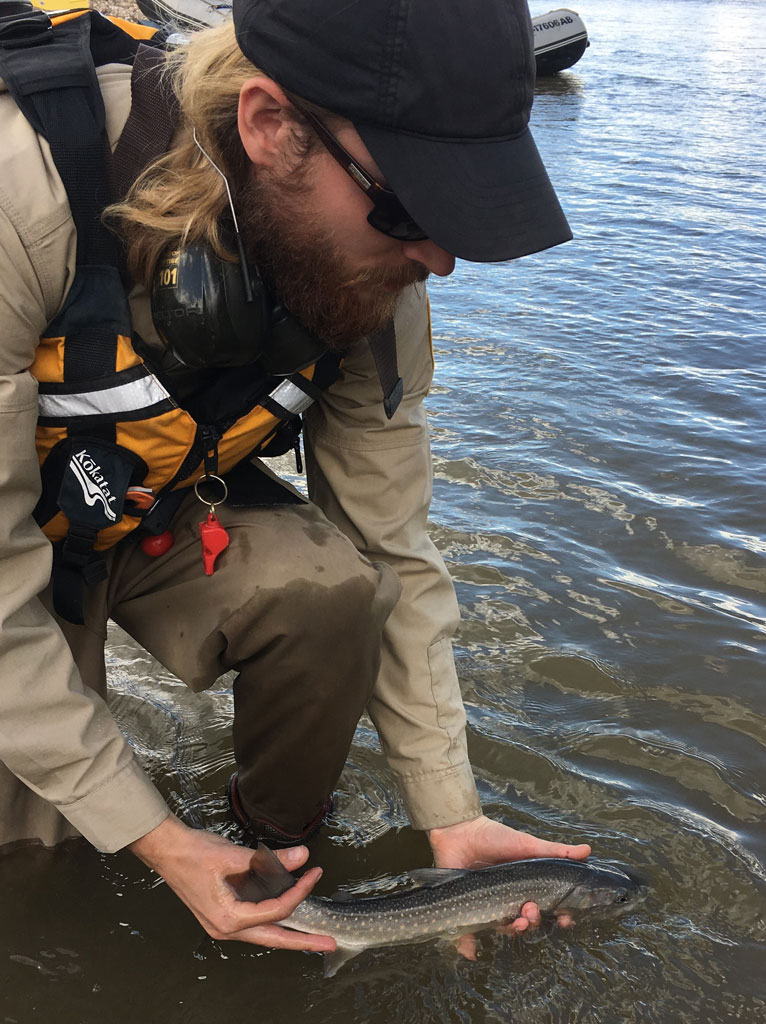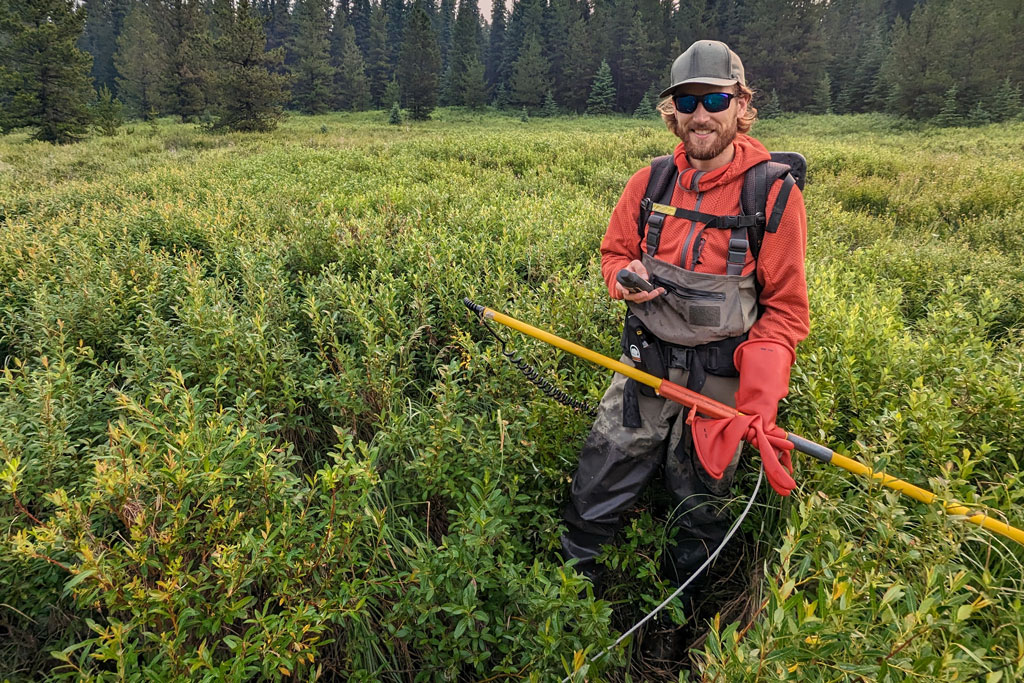
Dr. Benjamin C. Kissinger joins fRI Research most recently from the University of Calgary where he was a Research Associate in the Post Lab.
Dr. Kissinger has worked on fish issues throughout North America, within federal, provincial, and state governments; academia; and industry. His research has taken him from as far east as the Adirondack Mountains to recover brook trout that had been extirpated by lake and river acidification, to Alaska in the west where he worked in hatcheries that diverted commercial salmon harvest to artificially propagated populations. The vast majority of his work to date, has been related to applied fisheries management, research, and recovery associated with government initiatives.
More recently, Dr. Kissinger worked for Alberta Environment and Parks as a biologist based in Grande Prairie, giving him an intimate knowledge of northwestern Alberta through his fieldwork and recreation.

His recent research interests have been focused on understanding hybridization extent between native and non-native salmonids using genomic tools. This work is being done with a master’s student (Emily Franks, co-supervised by Dr. Post and Dr. Mee), and in collaboration with the University of Montana.
Dr. Kissinger is also interested in better understanding changes in non-native species (in particular brook trout) occupancy over time through the use of dynamic occupancy models to understand how land use and management actions have shaped their contemporary distribution.
Lastly, he continues to investigate the relationship between species presence and temperature and has, for the the last 6 years, collected temperature data for temperature models by MacHydro for Alberta’s East Slopes. As he develops the future Water and Fish Program at fRI Research, he looks forward to continuing and potentially expanding these projects with support from collaborators and input from stakeholders.
Dr. Kissinger completed his PhD at the University of Manitoba, where he looked at the factors influencing the maintenance of unique biodiversity in lake trout along the Inuvik to Tuktoyaktuk Highway, NWT. As told in a CBC article, his work documented the only known location where lake trout complete their entire life cycle in brackish water and looked into physiological mechanisms behind how this was maintained in the wild. This work has aided in understanding the ecology of this unique life history and management of populations along the Inuvik to Tuktoyaktuk Highway which is of importance to Inuvialuit and Gwitch’in subsistence.

Select Publications
Joubert, B.A., Sullivan, M.G., Kissinger, B.C., Meinke, A.T. 2020. Can smartphones kill Trout? Mortality of memorable-sized Bull Trout (Salvelinus confluentus) after photo-releases. Fisheries Research. 223.10548
Kissinger, B.C., Gillis, D.M., Anderson, W.G., Killeen, C., Halden, N.M., Reist, J.D. 2019a. Influences of life history and environment on lake trout (Salvelinus namaycush) growth and longevity in the Husky Lakes of the Western Canadian Arctic. Hydrobiologica. 840 (1), 173-188.
Kissinger, B.C., Harris, L.N., Swainson, D., Anderson, W.G., Docker, M.F., and Reist, J.D. 2017a Fine-scale population structure in lake trout (Salvelinus namaycush) influenced by life history variation in the Husky Lakes drainage basin, NT Canada. Canadian Journal of Fisheries and Aquatic Sciences. DIO: 10.1139/cjfas-2016-0524
Kissinger B. C., Bystriansky J, Czehryn N., Enders E. C., Treberg J., Reist J. D., Whitmore E., and Anderson W. G. 2017b. Environment-phenotype interactions: influences of brackish-water rearing on lake trout (Salvelinus namaycush) physiology. Environmental Biology of Fishes. DIO: 10.1007/s10641-017-0607-0
Kissinger, B. C., Gantner, N., Anderson, W.G., Gillis, D. M., Halden, N. M., Harwood, L. A., Reist, J.D. 2016. Brackish-water residency and semi-anadromy in Arctic lake trout (Salvelinus namaycush) inferred from otolith microchemistry. Journal of Great Lakes Research, Special Issue, Large Lakes in Northern Canada. DOI: 10.1016/j.jglr.2015.05.016
Find more of Dr. Kissinger’s publications here.







